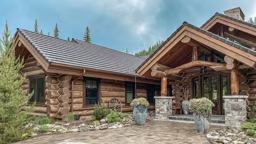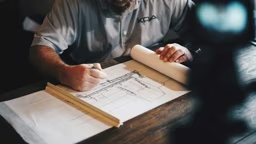_11868_2024-09-17_08-44.jpg)
You’ve dreamed and saved for your ideal log or timber home. Now, as you finalize your plans, consider these smart strategies for aging in place so you can rest easy knowing you’re all set for the future.
Inside the Home
Keeping in mind the changes that come with aging, some simple design tactics can make the process easier. An open and single-level floor plan ensures an easy path between essential spaces. If multiple stories are a must, consider adding a residential elevator — or plan ahead for one (incorporating stacked closets which can house a future shaft will do the trick).
Universal design practices are key, from curbless showers to wide hallways. Even switching from knobs to lever-style handles and pulls will pay off. For cabinets, slide-out shelves allow better access for those hard-to-reach essentials.
Outside the Home
The first “step” is to limit the number of stairs it takes to enter your home. Aim for at least one no-step entry and install handrails on existing staircases.
No home is maintenance-free, but you can set yourself up for an easier time by installing a proper gutter system, keeping trees away from the home and utilizing deep overhangs for protection.
Money Matters
After settling into your home, you may think the main financial phase is complete. Not so fast — a long-term budget and financial plan ensure you can live comfortably in your home after retirement and maintain your lifestyle.
The main components of your budget should include house expenses (like the mortgage, utilities and maintenance), healthcare needs, taxes on your retirement funds, groceries and emergencies. Adding a contingency fund is wise; the remainder can go toward savings, entertainment, hobbies and traveling.
Do You Know the Rule?
How do you avoid running out of money in retirement? The golden rule is to spend no more than 3% of your retirement savings per year, which should safeguard you from inflation and longer life expectancies. Source: Time, Inc.











